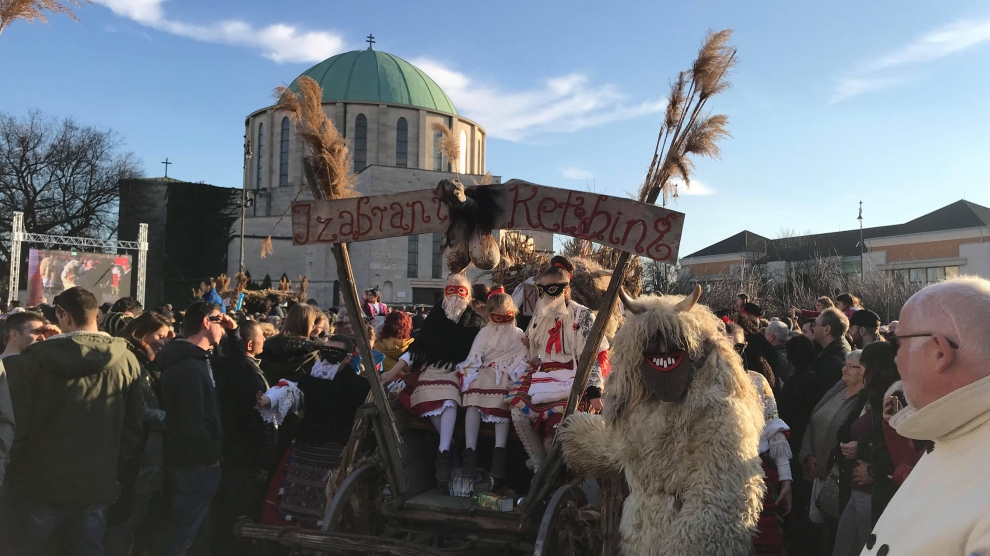The final season of Game of Thrones is approaching. But winter is not coming to Hungary. In fact, it’s leaving. Last week in the southern town of Mohács, Hungarians celebrated the last days of winter with a huge bonfire and even greater amounts of alcohol.
I love carnival, those days when you can be whoever you want to be. And the festival at Mohács is one of a kind. Maybe for some it’s only another excuse to drink and party more than usual, but the tradition and the meaning behind it, make it a fascinating celebration. So much so that in 2009 the festival gained a place on the UNESCO’s Representative List of the Intangible Cultural Heritage of Humanity.
The festival, which lasts for six days, features busós (people wearing traditional masks) and includes folk music, masquerades, parades, dancing and ends with a big bonfire in the main square where a scarecrow, symbolising winter, is burnt on a pyre.

According to the most popular legend, the tradition dates back to the Ottoman occupation in the 16th century, when Hungarians had to flee their hometown of Mohács to escape from the Turkish army. One night, a man suddenly appeared from nowhere and told them to prepare for battle and to carve various weapons and scary masks and wait for a stormy night when a masked knight would appear. Everything happened just as he described. And led by this mysterious knight, Hungarians reconquered their town while the Turks ran away, scared that they had been attacked by demons. This legend has since then taken on various other forms, and in one the role of the busós was to scare winter itself.
Today, busós wear horned wooden masks and big sheepskin costumes as they attempt to scare away winter and welcome in the spring. They arrive in rowing boats on the Danube and take to the streets making noise with cowbells and wooden instruments. Their helpers are called jankeles, whose role is to keep people away from the busós, using bags filled with rags and sawdust.
For six days, there are no rules and anything goes. Lots of families with children enjoy the festival during the day. While the night is owned by the young, whose favourite game is drinking pálinka while playfully chasing women. Though to me, it didn’t seem so playful. My friend, who is a historian, told me that the celebration was not so innocent in the past. These areas were, and still are, inhabited by the Šokci, a group of South Slavs mainly present in eastern Croatia, southeastern Hungary, and northern Serbia. It has been said that the Šokci people were able to thrive and survive because children were often conceived during the Mohács festival, and their lineage could not be questioned.
After find that out, I spent the rest of the evening walking as close as possible to the buildings.


Add Comment